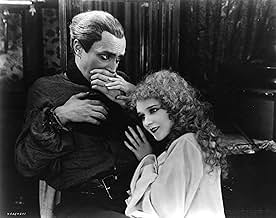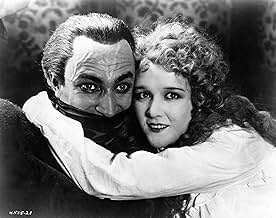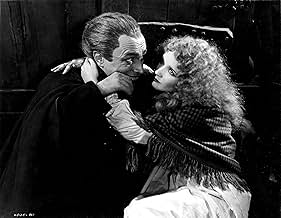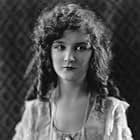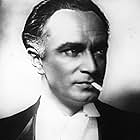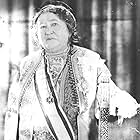VALUTAZIONE IMDb
7,6/10
8408
LA TUA VALUTAZIONE
Aggiungi una trama nella tua linguaWhen a proud noble refuses to kiss the hand of the despotic King James in 1690, he is cruelly executed and his son surgically disfigured.When a proud noble refuses to kiss the hand of the despotic King James in 1690, he is cruelly executed and his son surgically disfigured.When a proud noble refuses to kiss the hand of the despotic King James in 1690, he is cruelly executed and his son surgically disfigured.
Julius Molnar
- Gwynplaine as a Child
- (as Julius Molnar Jr.)
Sam De Grasse
- King James II
- (as Sam DeGrasse)
Károly Huszár
- Innkeeper
- (as Charles Puffy)
Zimbo the Dog
- Homo the Wolf
- (as Zimbo)
Tom Amandares
- Shouting Man at wheel on ship
- (non citato nei titoli originali)
Henry A. Barrows
- Undetermined Secondary Role
- (non citato nei titoli originali)
Richard Bartlett
- Undetermined Secondary Role
- (non citato nei titoli originali)
Les Bates
- Undetermined Secondary Role
- (non citato nei titoli originali)
Charles Brinley
- Undetermined Secondary Role
- (non citato nei titoli originali)
Carmen Castillo
- Dea's Mother
- (non citato nei titoli originali)
Trama
Lo sapevi?
- QuizGwynplaine's fixed grin and disturbing clown-like appearance was a key inspiration for comic book writer Bill Finger and artists Bob Kane and Jerry Robinson in creating one of the most iconic comic book villains ever, The Joker.
- BlooperThe opening scene happens in James II's reign (1685-1688), but Lord Clancharlie is sentenced to death in an Iron Maiden. This instrument of torture was invented in 1793 for display in museums.
- Citazioni
Gwynplaine: [Via subtitles, to the House of Lords] A king made me a clown! A queen made me a Peer! But first, God made me a man!
- ConnessioniEdited into Phobos (2019)
Recensione in evidenza
Like most artistic "isms," expressionism is somewhat difficult to define; in general, however, it refers to a style in which the artist is much less interested in capturing external realities than in portraying emotional and psychological states; consequently, expressionism is often fantastic in a visual sense--and when it combined with the darker edges of Germanic folklore it gave rise to a series of classic and near-classic silent films, including THE CABINET OF DR. CALIGARI, NOSFERATU, THE GOLEM, and WAXWORKS.
Over time, the style began to creep into American film. This was most particularly true of films made at Universal Studios, which had major successes with such Gothic-inflected films as THE HUNCHBACK OF NOTRE DAME and THE PHANTOM OF THE OPERA, both of which starred Lon Chaney. Drawn from a minor work by Victor Hugo, THE MAN WHO LAUGHS was first intended as a Chaney vehicle; by the time it began production, however, Chaney had decamped to Metro-Goldwyn-Mayer--and Universal assigned Conrad Veidt to the starring role under director Paul Leni. Both men had been deeply involved in the German expressionist movement, and the resulting film was a melodrama so deeply steeped in the grotesque that it came to be regarded as a horror film.
THE MAN WHO LAUGHS concerns a child named Gwynplaine who is caught up in royal intrigue and is deliberately disfigured, his mouth cut into a ghastly, inflexible grin. Abandoned, he rescues an blind infant girl; both are taken in by the kindly Ursus (Cesare Gravina.) Years later, and entirely unaware of his aristocratic origin, Gwynplaine (Veidt) and the beautiful blind maiden Dea (Mary Philbin) are popular carnival actors, appearing in a play written by Ursus--but although he loves Dea, Gwynplaine is deeply humiliated by his eternal grin and feels he can never marry. Ironically, it is not until he is once more caught up in a royal powerplay and recognized as a peer that he realizes the depth of Dea's love.
In some ways the plot is simplistic and occasionally too much so, but the look of the thing is relentlessly fascinating. Director Leni endows his world with grotesque faces, vulgar sexuality, and deliberately twisted visuals--particularly so in the first half of the film, which is greatly famous for the sequence in which the abandoned child stumbles through a snow storm beneath gallows bearing rotting corpses to find the infant Dea. Veidt's hideous grin, an early creation by make up genius Jack Pierce, is remarkably effective; the performances are memorable, and although the second half of the film is excessively predictable the whole thing goes off with a bang.
Although it was hardly a failure, in 1928 THE MAN WHO LAUGHS proved too gruesome for many audiences, and the rise of sound films drove it into a too-rapid obscurity. Even so, it would cast a very long shadow: it is an important link in the chain between German expressionism and the great Hollywood horror classics of the early 1930s. The Kino DVD presents a reasonable but far from flawless transfer of the film, along with several bonus features, most significantly a "making of" documentary that details the film's stylistic importance. Recommended for fans of classic horror.
GFT, Amazon Reviewer
Over time, the style began to creep into American film. This was most particularly true of films made at Universal Studios, which had major successes with such Gothic-inflected films as THE HUNCHBACK OF NOTRE DAME and THE PHANTOM OF THE OPERA, both of which starred Lon Chaney. Drawn from a minor work by Victor Hugo, THE MAN WHO LAUGHS was first intended as a Chaney vehicle; by the time it began production, however, Chaney had decamped to Metro-Goldwyn-Mayer--and Universal assigned Conrad Veidt to the starring role under director Paul Leni. Both men had been deeply involved in the German expressionist movement, and the resulting film was a melodrama so deeply steeped in the grotesque that it came to be regarded as a horror film.
THE MAN WHO LAUGHS concerns a child named Gwynplaine who is caught up in royal intrigue and is deliberately disfigured, his mouth cut into a ghastly, inflexible grin. Abandoned, he rescues an blind infant girl; both are taken in by the kindly Ursus (Cesare Gravina.) Years later, and entirely unaware of his aristocratic origin, Gwynplaine (Veidt) and the beautiful blind maiden Dea (Mary Philbin) are popular carnival actors, appearing in a play written by Ursus--but although he loves Dea, Gwynplaine is deeply humiliated by his eternal grin and feels he can never marry. Ironically, it is not until he is once more caught up in a royal powerplay and recognized as a peer that he realizes the depth of Dea's love.
In some ways the plot is simplistic and occasionally too much so, but the look of the thing is relentlessly fascinating. Director Leni endows his world with grotesque faces, vulgar sexuality, and deliberately twisted visuals--particularly so in the first half of the film, which is greatly famous for the sequence in which the abandoned child stumbles through a snow storm beneath gallows bearing rotting corpses to find the infant Dea. Veidt's hideous grin, an early creation by make up genius Jack Pierce, is remarkably effective; the performances are memorable, and although the second half of the film is excessively predictable the whole thing goes off with a bang.
Although it was hardly a failure, in 1928 THE MAN WHO LAUGHS proved too gruesome for many audiences, and the rise of sound films drove it into a too-rapid obscurity. Even so, it would cast a very long shadow: it is an important link in the chain between German expressionism and the great Hollywood horror classics of the early 1930s. The Kino DVD presents a reasonable but far from flawless transfer of the film, along with several bonus features, most significantly a "making of" documentary that details the film's stylistic importance. Recommended for fans of classic horror.
GFT, Amazon Reviewer
I più visti
Accedi per valutare e creare un elenco di titoli salvati per ottenere consigli personalizzati
Dettagli
- Data di uscita
- Paese di origine
- Lingua
- Celebre anche come
- The Man Who Laughs
- Luoghi delle riprese
- Azienda produttrice
- Vedi altri crediti dell’azienda su IMDbPro
Botteghino
- Lordo in tutto il mondo
- 4.347 USD
- Tempo di esecuzione1 ora 50 minuti
- Mix di suoni
- Proporzioni
- 1.20 : 1
Contribuisci a questa pagina
Suggerisci una modifica o aggiungi i contenuti mancanti

Divario superiore
By what name was L'uomo che ride (1928) officially released in India in English?
Rispondi

